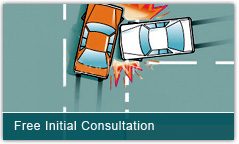Slip and Fall Incidents
Slips, trips, and falls occur most often as a result of liquid contaminated walking surfaces, improper stair construction or conspicuous, loose or ill placed rugs and carpets, as well as irregularities and sudden elevation changes in walking surfaces.
At Forensic Dynamics, our slip and fall experts collaborate with our biomechanical engineers to firstly determine how the slip/fall occurred, and subsequently how/if the alleged injury took place.
When it comes to slips, our experience has clearly shown that an individual will slip or not slip depending on how he walks, what type of shoe he uses, how the floor is constructed and finished and whether there is lubrication present.
Some of our competitors use a specially constructed “drag sled” which uses the shoe sole at its base and is pulled along the surface with a fish scale. Unfortunately this does not work when lubrication is present as a result of the “sticktion” effect. From these cases, we are quite surprised to see that the wet friction is actually higher than the dry surface reading, an anomaly which flies in the face of not only common sense (when was the last time you saw a sign that says “caution floor slippery when dry”?) but also the traditional engineering literature.
To get around this “sticktion” effect, we use an English XL machine which fires the heel of a test sample onto a surface at a similar speed and angle as that of an actual heel. This provides much more accurate wet friction values than the previously described “dragsled” method.
We work with both Plaintiff and Defense parties in slip and fall litigations to determine which, if any, of the previously described four parameters could have played a role in the slip and fall. By taking English XL to the premises and outfitting the unit with “identical” material, it is possible to determine exactly which circumstances contributed to the slip and fall.
When it comes to trips, we establish the height differential (if there is one) which the Plaintiff alleges caused the fall to occur. Often, these elevation differences are rectified by governmental bodies before our involvement. If this occurs, we use photographs that are often taken at the scene before repairs are made, and using a technique known as photogrammetry, we can determine with precision the nature of the height differential. This can be compared to applicable standards or the governmental body’s own policies to determine whether a hazard was truly present.





